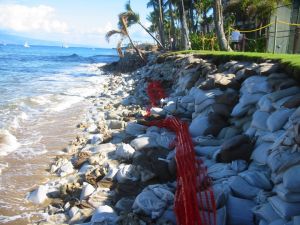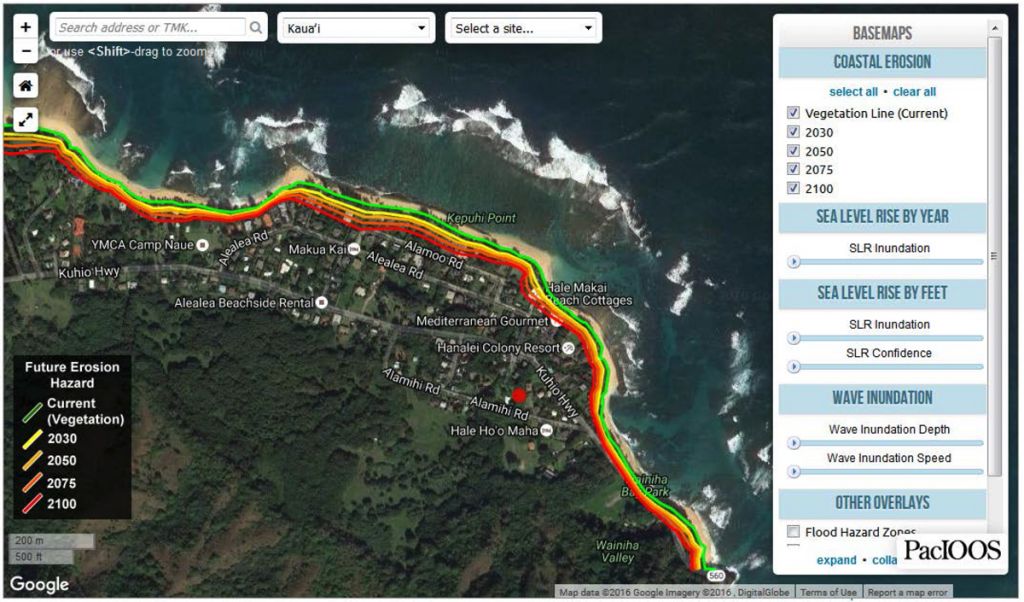Forecasting beach loss from sea-level rise on the island of Kauaʻi

The beaches of the Hawaiian Islands attract nearly 9 million visitors each year, who inject around $15.6 billion into the state’s economy and support almost 200,000 jobs. Beyond their economic importance, Hawaiian beaches are also culturally and ecologically valuable. However, climate change driven sea-level rise is causing many beaches to disappear, endangering property, infrastructure, and critical habitats.
The goal of this project was to develop a method for forecasting erosion-vulnerable beach areas that could be used in coastal management planning. Researchers focused on the island of Kauaʻi, modeling beach response to rising sea level over the next century and producing maps that provide information about which areas of coastline are especially vulnerable to future erosion as a result of sea-level rise. Results show that coastal erosion is expected to significantly increase on Kauaʻi, doubling its historic rate by 2050 and leading to partial or total loss of 90 percent of beaches by 2100.
The Hawaiʻi Department of Land and Natural Resources, local planning departments, and other coastal management agencies are using this project’s data and maps for hazard preparedness and adaptation planning on state and local scales. Results were incorporated into a statewide study of shoreline sea-level rise vulnerability led by the Hawaiʻi State Interagency Climate Adaptation Committee. While this study focused on Kauaʻi, it established a methodology for predicting future beach erosion that is now being applied to other areas of the state to improve coastal management decision making.

PROJECT DETAILS
FUNDED:
FY2014
PI:
Charles Fletcher
Professor of Earth Sciences, UH Mānoa

